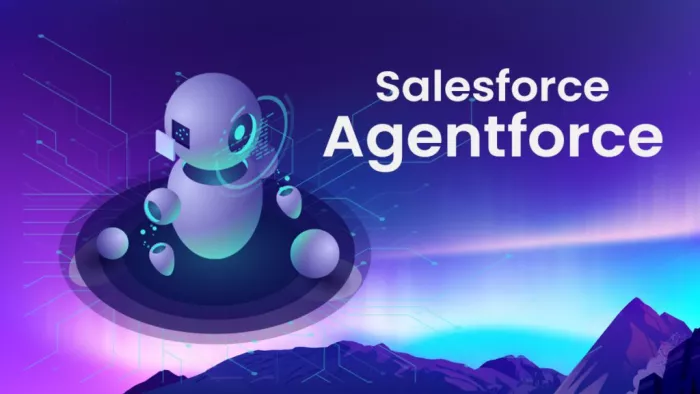Every developer wants less grunt work and fewer repeated logic chains to babysit, or at least the ones I know do. This is whether agent AI starts to matter. It’s not about implementing another software system to monitor; it’s about creating more intelligent workflows that adapt as your platform grows. Agentforce can be a great option as you aren’t tied to rigid triggers or static rules. You can create automation that learns and responds based on real use, not just what you outlined in a sprint planning session.
Agentforce may sound like just another AI tool that claims to do everything and make all your dreams come true. It's made for people who live in codebases and don’t get caught up in the hype. If you’re curious how agent AI can reshape your stack's behavior, this breakdown on AI agents for developers is a solid place to start.
You can strip hours out of QA loops and turn those messy backend alerts into useful information. You’ll still need to employ some critical thinking when it comes to what exactly to automate, but Agentforce makes the wiring process faster and more flexible than the usual one.
Benefits of Using Salesforce Agentforce AI in Development

Agentforce for developers isn’t the silver bullet, but it will eliminate the grunt work that slows down build cycles. Think of it as intelligent automation layered over your existing flow - now another tool that needs its own training schedule. When used right, it helps speed things up without creating more complexity or bloating your stack.
Increased Efficiency and Productivity
The most obvious win is time saved. We recommend using Agentforce to automate review assignments, test triggers, and deployment prep. It won’t replace your thoughtful engineering, but it will remove repetitive tasks from your daily to-do lists. When used selectively, it keeps your team focused on solving problems instead of bouncing between small tasks.
Improved Code Quality and Consistency
Automation is only worth it if it actually improves outcomes. Agentforce can reinforce naming standards, catch test regressions early, and maintain consistency across services. It’s not flashy, but it works to prevent the kind of errors that always seem to slip through the cracks late in the cycle.
Reduced Time to Market
Speed isn’t the be-all and end-all, but you have a real advantage when you can move fast without cutting corners. With fewer manual steps, clearer triggers, and AI working to streamline delivery, releases become less of a panicked fire drill. That said, it still requires human judgment. The AI is a tool, not a crutch.
How to Get Started with Agentforce AI
Getting started with Agentforce for developers in Salesforce doesn’t require a complete reset and overhaul of all your processes - just a clear plan for how it fits into your flow. Whether you are working on your automation, data integrity, or faster release cycles, knowing what to offload to the AI and what processes need to remain human is key. This isn’t plug-and-play magic, but you'll save hours once it’s wired in.
Setting Up Your Environment
Start with access control and permissions - Agentforce requires the proper scopes to operate without overreaching into your other workflows. Most teams use a sandbox environment to test initial setups before promoting changes. Make sure that any API integrations match your org’s integration rules. It can be tempting to skip the prep work, but taking the time ensures you don’t get bogged down during cleanup later.
Integration with Your Existing Stack
Don’t get rid of any tools that you already know and trust. Agentforce performs better when used as a supplement rather than a complete replacement. Hook it into your current CI/CD pipeline, align it with code review processes, and monitor how it behaves with your current testing layers. Watch for alarm noise and adjust your thresholds early — default settings rarely work without any tweaking.
Best Practices for Implementation
Set guardrails. Define when Agentforce will step in and when it stays out of the way. Use it to flag common error types, suggest test coverage, or surface outdated dependencies - but don’t let it flood the team with suggestions that will just be ignored. Ensure you make time for regular reviews and treat the AI as part of the team, not the lead.
Wrapping Up Salesforce Agentforce for Developers
Agentforce isn’t here to replace developers - it’s here to help them save time instead of spending ages on tasks that don’t need human intervention. It’s a tool, not a strategy. Like any other tool, its value is directly impacted by its use. Throwing it in the mix without structure will add another convoluted layer you don’t need. Use it to enforce your coding standards, reduce review cycles, and keep technical debt in check. It works best - when set up intentionally and reviewed like any other software contributor.
Agentforce for developers in Salesforce is functional in large codebases or teams managing multiple orgs. It reduces time spent on context switching, flags issues early, and keeps your commits moving. No tool is smart by default - you’ll need to configure it based on your workflow. If you treat it like an intern with good instincts but limited judgment, you’ll get the most out of it.
When introducing Agentforce to your team, start small. Pick one output type—such as test class suggestions or duplicate logic detection—and roll it out with clear feedback loops. Once you have that setup, you can build from there. You won’t get immediate returns and will need to check in regularly on usefulness and accuracy.
The main thing to remember is that Agentforce isn’t magic - it’s a tool that requires training and tuning and should be held to the same standards you expect from your team. Use it where it saves time, ignore any hype, and focus on the parts that propel your processes forward.
Post Comment
Be the first to post comment!




